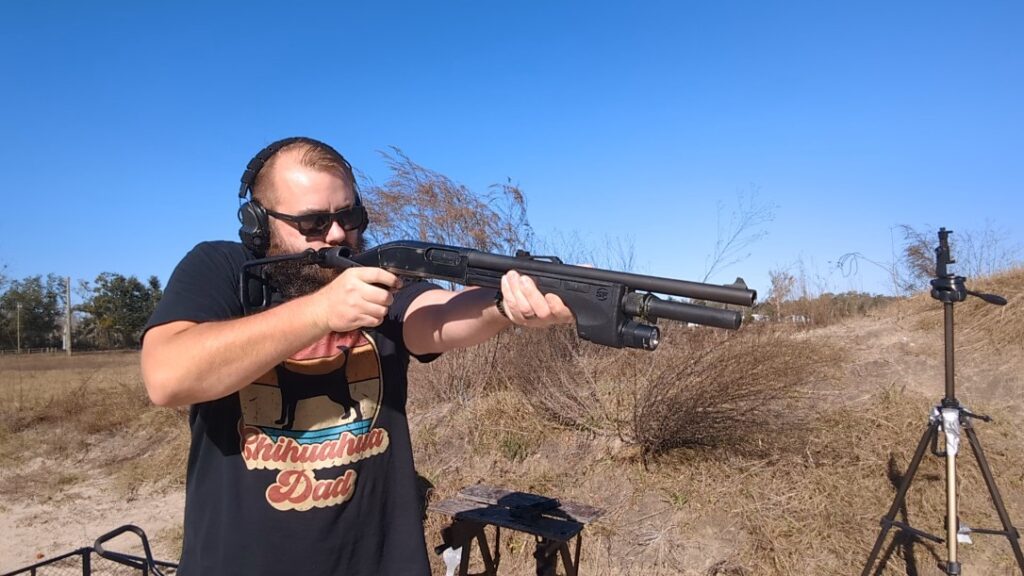Words. Matter.
The attacker in Wisconsin, a 51 year old Molson Coors employee, killed five of his fellow co-workers before shooting himself and ending the incident. The specific motive is not known, but evidence suggests he was terminated while on leave for an injury. Reports suggest he believed he was being spied on by Molson Coors to be certain he was injured, which isn’t an unheard of practice by companies with injured employees. Based on his reported employment and the things noted to be happening within the company, it could be he thought his employment was coming to an unjust end. It could have been stress specific to one or more of the employees he shot. It could have been any number of stress factors that led him to believe he must respond violently.
We don’t know.
Advertisement — Continue Reading Below
Additionally, I’ve seen reports that a suppressed pistol was possibly used in the shooting. That makes it the second such incident (if true) behind the Virginia Public Works workplace shooting. Other reports are stating he built his own firearms and may have done so with a suppressor (they aren’t complicated).
On Language
Any of the recent hearkening back references to Virginia seems to focus on the term ‘Mass Shooting’ alone and downplays, through omission, the fact it was a public works employee who had not been fired (he resigned that day) and who had no criminal record.
We are ‘left’ to imagine *cough* Vox *cough cough* that this was somehow just the NRA handing out silenced pistols to lunatics while handing a 5 spot to legislative body members to stay on their side. Lost is the information that this was a workplace event, that it was a trusted insider, and are instead presented with an image of an outsider attack. The image of some random gun wielder who just happened to pick VPW.
Advertisement — Continue Reading Below
It wasn’t, and pretending it wasn’t doesn’t help anyone prepare their own workplaces and keep an effective eye on the stress of their staff and co-workers to head incidents off earlier, before they approach violence.
The usual calls of, “we cannot accept this”, “these tragedies happen so often”, and the other valueless platitudes from talking heads are out in force, or were as they have seemed to quiet is the more solidly rooted itself as a workplace incident. Why?
Certain aspects of the shooter became human, and humanized people garner sympathy. Someone who was fired while on injury leave is a far more sympathetic figure from a neutral observer standpoint than, say, the attacker in Texas who targeted Walmart to kill illegals.
Advertisement — Continue Reading Below
The former, the Molson Coors employee, can garner some level of humanistic sympathy for his situation while his actions are still reviled. The latter, the racist mass murderer attacking the back-to-school sale, garners only horrific disgust from all but those rare few of exact like mind. One had a sympathetic motive, and sympathetic motives erode public outrage that anti-gunners use to stir up anti-gun activism.
Of course ‘we cannot accept this’. We abhor senseless death as a society. Of course ‘these tragedies happen too often’. That is literally any occurrence of an event even remotely like this.
But back to the title “Mass Shooting” or “Workplace Violence”?
Both? Yes. But which descriptor gets repeated? That tends to telegraph the angle or message an outlet wants to frame the story as, and not simply deliver the details of the occurrence.
Advertisement — Continue Reading Below
The classifier and the principle term would be Workplace Violence. That classifier covers part of the motive sphere and does so with more clarity than Mass Shooting. When we think of a Mass Shooting we think of an occurrence that could be entered into the MAPS report.
Mass Attacks in Public Spaces is the Department of Homeland Security report, compiled by the United States Secret Service, that complies data on attacks like Virginia and Wisconsin. But it also would look at attacks like Pulse, Virginia Tech, Sandy Hook, Las Vegas, and Garland Texas.
The motivations behind these attacks, those that we know for certain, are varied widely. This omission of detail we are falling dangerously into, when it comes to reporting, can warp perceptions and alter effective responses. Media is segmenting motive out of the equation entirely, the result is these attacks start to look the same when they are very differently driven.
Advertisement — Continue Reading Below
“But response is independent of motive. You’ve said that.”
Now, protecting against attacks in progress is amotivational. The motive behind the person or persons pulling the trigger is no longer a usable preventive factor. It, at best, will be a social factor used as leverage to encourage the event to end under very specific and often dire circumstances. It is by no means a reliable tool.
A teacher who is able to talk a student away from that edge of madness is a hero, but TV dramas and the publicized times it has luckily worked condition us to believe that it is somehow the norm that is does work. If we can just ‘talk them down’ no one will get hurt, or no one else as the case might be.
Scripted violence has done us a great disservice here, in my opinion. Scripted violence has caused us to lose touch with the absolute chaos and very real danger of an attack and the myriad of factors that go into it by putting it in this nice little mental box of, ‘X person really doesn’t want to do this, they just need someone to tell them that nicely.’
Advertisement — Continue Reading Below
Then the world gives you a Brenton Tarrant or a Stephen Paddock.
The sans motive responses are all about turning the attack into a gunfight and winning that gunfight quickly. Nothing else can take back the initiative and give it to people who were attacked. Legally hamstringing people from defending themselves only helps their potential assailants. It does nothing to promote more ‘peaceful work spaces’ or any such nonsense.
Knowing the motivations can help the most before an incident. Knowing before can allow a community to work to quell hatred, fear, stress, panic, and all the emotions that can lead to violence. Being an engaged and caring community, whether through work or school or faith, is a very good defense. Keeping an eye out for warnings of danger and being prepared to meet them.
Advertisement — Continue Reading Below
It’s that second part. Being prepared to meet the danger to protect yourself, your family, and your community, that is the scary part. That’s the one that politicos who choose whether this was workplace violence, or a mass shooting, or terrorism, don’t want to tell you is your responsibility. Telling you the secret, that it is your job and they can’t do it for you, costs them votes. It costs them social/political credibility and capitol. It is highly unpopular to say you (the government) cannot do anything effective to help, especially when your platform is built on ‘the government’ doing as much for you as possible.
It’s even more so to say that, even if you do something you might not win, you might not survive. We live in an era where the privileged end of our world population (the whole first world) believes they are entitled to safety from a chaotic and sometimes hostile environment, one that they live in but don’t believe they do anymore.
They have equated our progress and efforts to live safer with a false right to safety. That false right can only be “ensured” through the curtailment of other rights in the name of public safety which never seems to mesh with an individual private citizen’s rights.
Advertisement — Continue Reading Below















